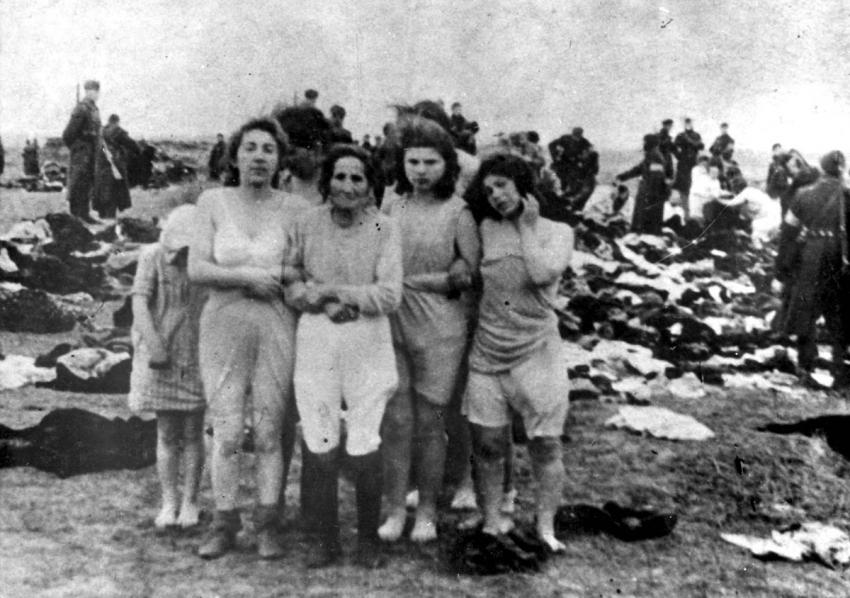On the eve of World War II, some 7,000 Jews lived in Liepaja, Latvia. The Germans occupied Liepaja on 29 June 1941, and immediately started to imprison and murder Jews, assisted by armed Latvians. By the end of July , almost 1,000 Jewish men had been murdered. Latvian volunteers from the "Arajs Kommando" participated in the massacre. Most of the murders were committed on the shores of the Baltic Sea, including in the fishing town of Skede, north of Liepaja.
In August, the executions were fewer and more random, but in September and October, the mass murder recommenced, and hundreds of Jews were killed. By November, some 3,900 Jews remained in Liepaja, mainly women and children.
On 14 December, Latvian policemen assembled the city's Jews and carried out a selection. Essential workers were sent back home, while the rest of the Jews were taken in trucks and sleds to Skede, to the dunes overlooking the Baltic Sea. A long ditch had been dug at the foot of the dunes. The Jews were forced to strip off their clothing except for their underwear. Near the ditch they were made to take off their remaining clothes and were executed by units made up of Latvian collaborators and German policemen, under the command of SS officer Fritz Dietrich. On 15-17 December 1941, 2,700-2,800 Jews from Liepaja were executed, most of them women and children. Approximately 1,000 Jews with working permits, their families and those who had managed to evade the massacre were left in Liepaja.
In the summer of 1942, a ghetto was established in Liepaja, and in October 1943, the ghetto was liquidated and Liepaja was declared "Judenrein" (cleansed of Jews). The Jews were taken in cattle cars to the Kaiserwald concentration camp near Riga. The next day, all those considered unfit to work were confined in the Riga ghetto. When the Riga ghetto was liquidated less than a month later, these Jews were deported to Auschwitz.
Two SD men who were present at the execution took this picture; one of them was identified as Oberscharführer Carl Strott. The photographs were discovered by David Zivcon, a Jew who worked as an electrician in the SD Headquarters in Liepaja. After the massacre, he was called to fix something in Strott's home and he noticed rolls of negatives in an open drawer. He took them, made copies with the help of a friend, and later returned them to the apartment under the pretext that there were electrical problems. He put his copies in a box and buried them in a stable. After the liberation he handed them over to Soviet Intelligence Officers. The copies were later used as evidence in the Nuremburg Trials.
Rheinhard Wiener, who was serving in the German Navy, happened to be in Skede at the time of the massacres and filmed about 65 seconds of the executions. He gave an interview after the war.
Yad Vashem Photo Archives 85DO2







